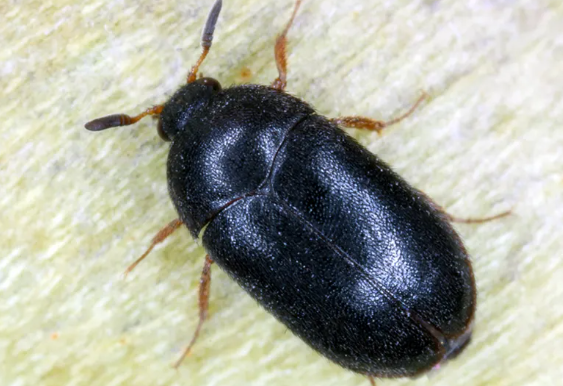In the United States, the presence of bugs is a common concern for many residents. Various factors contribute to the prevalence of pests in different cities, including climate, urban density, and local ecosystems. This article explores which city in America has the most bugs, focusing primarily on bed bugs, mosquitoes, and other common pests.
The analysis draws on recent data from pest control companies, search trends, and expert opinions to provide a comprehensive overview.
Understanding Bug Prevalence
Bugs, or pests, can be categorized into several groups, including insects, arachnids, and other arthropods. The most commonly reported pests in urban areas include:
- Bed Bugs: Small, nocturnal insects that feed on human blood, primarily found in homes, hotels, and public transportation.
- Mosquitoes: Known for their irritating bites and potential to transmit diseases, mosquitoes thrive in warm, humid environments.
- Ants: These social insects can invade homes in search of food and shelter, often leading to infestations.
- Cockroaches: Resilient pests that thrive in urban settings, known for their association with unsanitary conditions.
Factors Influencing Bug Populations
Several factors influence the prevalence of bugs in a city:
- Climate: Warmer climates tend to support larger populations of pests, particularly mosquitoes and bed bugs.
- Urbanization: Densely populated areas provide ample food sources and hiding spots for pests, leading to higher infestation rates.
- Seasonality: Certain pests are more prevalent during specific seasons, with summer months typically seeing a surge in mosquito populations.
Cities with the Most Bugs
Top Cities for Bed Bugs
According to data from Orkin’s 2024 report, the top three cities in the United States with the highest bed bug infestations are:
- Chicago, IL: For the fourth consecutive year, Chicago ranks as the worst city for bed bugs, with significant treatment requests reported.
- New York, NY: A close second, New York’s dense population and high tourism rates contribute to its bed bug issues.
- Philadelphia, PA: Philadelphia consistently ranks high due to its urban environment and older housing stock, which can harbor bed bugs.
Other cities that follow include Cleveland-Akron, OH, and Los Angeles, CA, both of which also report high levels of bed bug treatment.
General Bug Prevalence
While bed bugs are a significant concern, other pests also contribute to the overall bug population in cities. A report by Thumbtack highlighted the top cities for general pest issues, including:
- Atlanta, GA
- Dallas, TX
- Austin, TX
- Houston, TX
- Washington, D.C.
These cities report high levels of requests for pest control services, particularly for mosquitoes, ants, and spiders. The data indicates that southern cities, with their warm climates, tend to have more pest-related issue.
States with the Most Bugs
When examining states rather than individual cities, California emerges as the state with the most bug-related searches, followed by Texas and Florida. The breakdown of bug-related searches reveals:
- California: Approximately 47,000 monthly searches for pest control, with bed bugs leading the concern.
- Texas: Around 40,000 searches, with a significant focus on bed bugs and termites.
- Florida: Approximately 32,000 searches, where termites are a primary concern, surpassing bed bugs in search volume
The Impact of Bugs on Urban Living
The presence of bugs in urban environments can have significant implications for residents. Bed bugs, for instance, can lead to sleepless nights and anxiety, while mosquitoes pose health risks through the transmission of diseases such as West Nile virus and Zika virus. The economic impact of pest infestations is also notable, with residents spending millions annually on pest control services.
Health Concerns
Bugs can contribute to various health issues, including:
- Allergies: Some individuals may experience allergic reactions to bug bites or the presence of pests.
- Disease Transmission: Mosquitoes are well-known vectors for diseases, while cockroaches can trigger asthma and other respiratory issues.
Economic Impact
The cost of pest control can be substantial. According to estimates, Americans spend around $6 billion annually on pest control services. This figure includes both residential and commercial treatments, highlighting the economic burden of pest infestations on households and businesses alike.
Prevention and Control Measures
Preventing and controlling bug infestations requires a multi-faceted approach. Here are some effective strategies:
For Bed Bugs
- Regular Inspections: Check for signs of bed bugs in sleeping areas, including mattress seams and furniture.
- Travel Precautions: When traveling, inspect hotel rooms for bed bugs and keep luggage off the floor.
- Professional Treatment: Engage pest control professionals for effective bed bug treatments, especially in severe infestations.
For Mosquitoes
- Eliminate Standing Water: Mosquitoes breed in stagnant water, so removing sources like birdbaths and clogged gutters is crucial.
- Use Repellents: Apply insect repellent containing DEET when outdoors, especially during peak mosquito activity times.
- Install Screens: Ensure windows and doors are fitted with screens to prevent mosquitoes from entering homes.
For Ants and Cockroaches
- Seal Entry Points: Close off gaps and cracks in walls, windows, and doors to prevent pests from entering.
- Maintain Cleanliness: Keep food stored properly and clean up spills to reduce attractants for pests.
- Regular Pest Control: Schedule routine pest control services to keep bug populations in check.
Conclusion
In summary, while several cities in America struggle with bug infestations, Chicago, New York, and Philadelphia stand out as the cities with the most bed bugs. The overall bug prevalence is influenced by various factors, including climate, urban density, and seasonal changes.
Understanding the types of pests prevalent in different cities and states can help residents take proactive measures to mitigate infestations and protect their health and homes.As urban areas continue to grow and climate patterns change, the challenge of managing bug populations will remain a significant concern for many Americans.
By implementing effective prevention strategies and staying informed about pest control options, residents can create a more comfortable and bug-free living environment.


